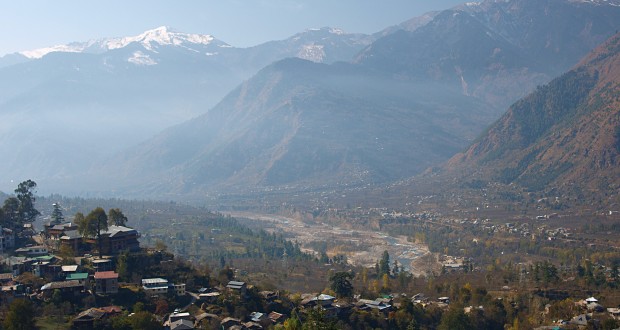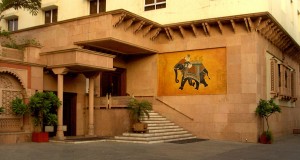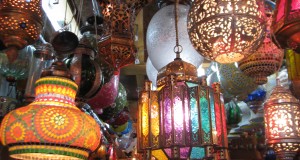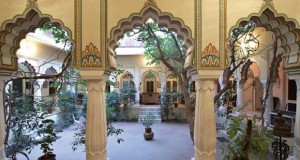Review Overview
3
Summary : Kulu town is situated on the banks of the winding River Beas, looking down the beautiful 'Valley of Gods' from a cool altitude of 1200 m.
Kulu town is situated on the banks of the winding River Beas, looking down the beautiful ‘Valley of Gods’ from a cool altitude of 1200 m. Unlike Manali it has not been developed for tourism but the town of Kulu is the administrative centre of the district. This means less facilities, but more peace and quiet. In fact the whole valley is often referred to as the Lulu Valley although this title is not strictly correct.
Kulu is mentioned in Hieun Tsiang’s travelogue, and changed hands many times over the centuries before coming under British rule in the 19th century. Much of its history is tied up in its principal landmark, the temple of Raghunath, dedicated to Lord Rama. The story goes that in the mid-17th century, the Rajah of the area fell sick, and took advice from his holy men to send out to the locality of Iyudya for the murtis (sacred images) of Raghunath (Rama). In thanks for his prompt recovery, he donated the entire valley to the gods, and made Kulu the permanent home of the holy icons, erecting the present temple for their safekeeping.
Like Manali, Lulu has a wide variety of hill and mountain people. The women wear mainly traditional costumes—woollen homespun dresses (usually cordbelted), embroidered shawls and leather moccasins. The men, compromising with Western fashions, wear a strange combination of Lulu caps and wool jackets, and Levi jeans and plastic anoraks. Unlike in Manali, where there are so many tourists it is common to be ‘blanked’ by locals, the people of Lulu are very open, friendly and keen to talk to foreigners. They are also urbanised—a thriving chain of hi-fi, camera and electrical shops (plus several video parlours) have sprung up between the old, tumbling wooden houses manned by grizzled tailors, dentists and fruit-and-nut men. Surprisingly, few of the ‘locals’ are local at all but come from neighbouring valleys and other parts of Himachal.
The valley stretches northward for almost 80 km (50 miles) from near Mandi al only 760 m to the Rohtang Pass at 3978 m. Lulu is prettiest from April to June, ands is best for mountain treks and views from September to November. But the town itself really comes alive only during the important Dussehra festival, which take place in October after the monsoons. The festival starts on the 10th day of the 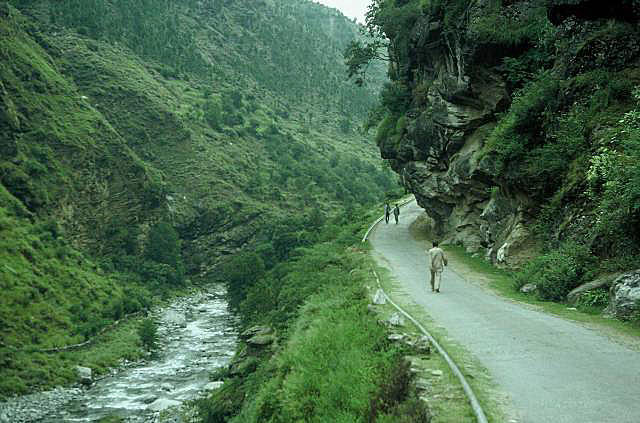 rising moon, and continues with mounting vigour (and increasingly competitive dance competitions) for 7 days. All over India, Dussehra is celebrated to commemorate Rama’s victory over the demon king Ravana. But in Kulu, it is Raghunath as ‘Bain man of the valley’ who is the focus of festivities: some 200 gods from temples all over the valley are brought here to pay him tribute. Hadimba is brought down fro. Manali to commence proceedings, and celebrations continue until she goes away again.
rising moon, and continues with mounting vigour (and increasingly competitive dance competitions) for 7 days. All over India, Dussehra is celebrated to commemorate Rama’s victory over the demon king Ravana. But in Kulu, it is Raghunath as ‘Bain man of the valley’ who is the focus of festivities: some 200 gods from temples all over the valley are brought here to pay him tribute. Hadimba is brought down fro. Manali to commence proceedings, and celebrations continue until she goes away again.
ARRIVAL/DEPARTURE
Air Vayudoot offer daily flights between Bhuntar (10 km from Kulu) and Delhi (Rs2040). Jagsons Airlines also has daily flights from Delhi to Bhuntar, which continue Shimla.
Road Kulu has regular buses to Manali (see p.248), and hourly buses to Shimla from 6 to 9 pm (8/9 hours). The fast deluxe bus to Delhi (16/18 hours) originates in Manali . and arrives in Kulu at 8 am and is often full. Advance-book this one. All buses of Kulu start from the new town bus-stand (by the tourist office) and then pick from the old town bus-stand across the river. There are also buses to Chandigarh hours) and Dharmsala.
Taxis are available, and can be shared to Chandigarh, Shimla, Manali sionally Delhi.
WHAT TO SEE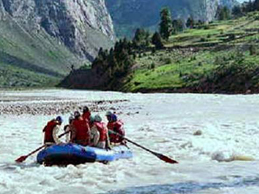
Most of kulu’s ‘sights’, as in Manali, are natural ones. They are best seen on foot, a short 2- to 3-hour expedition being sufficient to gain the finest local mountain and valley views. The town is divided into two parts by the winding Beas River. The ‘new’ town, with its modern bazaars, main bus-stand and tourist office, lies above the quiet, archaic village of the ‘old’ town. The long, narrow street connecting the lwo towns is a fiesta of Tibetan dhabas, Sikh jewellers, Hindu tailors, astrologer- towns makers, and scores of shawl industries. In high season, the hi-fi/electronic shops kkeep a deliberately low profile. Handicrafts, not modern technology, is Lulu’s main earner
unless you plan to stay overnight, a practical plan is to come into kulu on an earlybus from dharmsala, drop your bags in a cheap hotel room or leavethem with old baba at the shiva temple, spend a few hours looking around kulu, and then hop on a late bus to Manali. Gruelling perhaps, but there are much better hotels and food in Manali.

